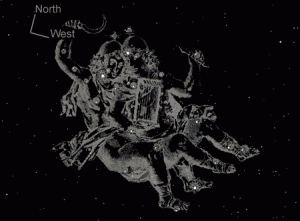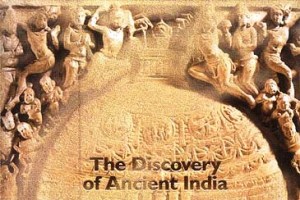YUDHISTHIRA ERA AND KALIYUGA:
Ans : No….


Scholars accept the date of the
Mahabharata War to be 3100 B.C. which also happens to the initiation of
the Yudhisthira Era. But this Era, is mentioned nowhere in the
Mahabharata text itself! At the time of Aswamedha of Yudhisthira, Vyas
has given descriptions in minute detail like collection of “Sruva”,
formation of wells and lakes, but never has written even a word about,
such an important event, as the beginning of the Yudhisthira Era.
Mahabharata also never mentions anything
about the beginning of the Kaliyug, even at the time of Krishna’s death.
Mahabharata Adiparva 2.13 states that the War took place in the inter
phase (“Antare”) of the Dwapara and Kali Eras. Thus it makes it clear
that the evening of the Dwapara has not yet ended and the Kaliyug had
not started when the War took place.
SAPTARISHIS:
Bhagwat states at 12.2.27-32 that
Saptarishis stay 100 years in one Nakshatra. At the time of King
Parikshit, the Saptarishis were in Magha. When they proceeded to
Purvashadha, Kali would start. There are 11 Nakshatras from Magha to
Purvashadha. Hence it is seen that Shukacharya tells Parikshit that
after 1100 years Kaliyug will start. Kaliyug started at 3101 B.C. Hence
3101 + 1100 = 4201 B.C. is the date of Parikshit.
But who is this Parikshit? Is he the son of Abhimanyu?Ans : No….
A minute observation of this reveals that
the above is not Abhimanyu’s son because Bhagwat is told to this
Parikshit. On the other hand, Mahabharata is told to Janamejaya. In the
Mahabharata, Parikshit’s death has been recorded. Hence it is evident
that Mahabharata was written and published after the death of Parikshit,
the son of Abhimanyu. Bhagwat is written after Mahabharata according to
the Bhagwat itself.
How can this Parikshit be the son of
Abhimanyu who died before the Mahabharata writing? So this Parikshit
appears to be somebody else than Abhimanyu’s son.
EQUINOX:
Mahabharata mentions the ancient
tradition as ‘Shravanadini Nakshatrani’ i.e. Shravan Nakshatra was given
the first place in the Nakshatra- cycle (Adi-71/34 and Ashvamedh 44/2).
Vishwamitra started counting the
Nakshatra’s from Shravan when he created ‘Prati Srushti’. He was angry
with the old customs. So he started some new customs. Before
Vishvamitra’s time Nakshatras were counted from the one which was
occupied by the sun on the Vernal Equinox. Vishwamitra changed this
fashion and used diagonally opposite point i.e. Autumnal Equinox to list
the Nakshtras. He gave first place to Shravan which was at the Autumnal
Equinox then.
The period of Shravan Nakshatra on
autumnal equinox is from 6920 to 7880 years B.C. This was Vishvamitra’s
period at the end of Treta Yuga. Mahabharata War took place at the end
of Dwapara Yuga. Subtracting the span of Dwapara Yuga of 2400 years we
get 7880 – 2400 = 5480 B.C. as the date of Mahabharata War.
ARCHAEOLOGY:
Evidences are pouring in Archaeology
showing cultures in India up to 30000 to 40000 years BC. Padmashri Late
Mr. V.S. Wakankar has dated the paintings in the caves of Bhimbetaka of
Madhya Pradesh to about 40000 BC.
Recently Dr. S.B. Rao, Emeritus Scientist
of the National Institute of Oceanography, Dona Paula, Goa, 403004, has
discovered under the sea, Dwaraka and dated it as between 5000 to 6000
BC. This news has been published by all the leading newspapers on 22th
October 1988.
Motilal Banarasidas News Letter October 1988 gives a news on page 6 under the heading “50,000 year old Relics” as follows:
Spectacular culture and physical relics
dating back to 50,000 years BC have been excavated from the Central
Narmada Valley in Madhya Pradesh. A team of Anthropological survey of
India recently conducted the excavation. It explored sites in two
districts Sebore and Hoshangabad.
In Vastava Ramayan author have shown that
Bali, the demon king went to South America during 17000 BC when the
vernal equinox was at Moola Nakshatra. MLBD News letter Oct. 1988 gives
news thus:-”Dravidians in America” – According to a press report the
Brazilian nuclear physicist and researcher Arysio Nunes dos santos holds
that the Dravidians of South India reached America much before
Christopher Columbus.
Mr. Nunes dos Santos, of the’ Federal
University of Minas Gerais maintains that the Dravidians colonised a
vast South American region 11000 years before the Europians reached the
new world. Vestiges of the Dravidian presence in America, he says,
include the strange phonetics of Gourani, Paraguay’s national language.
Moreover Bananas, Pine Apple, Coconut and Cotton, all grown in India
could have been taken to America by those navigators.
--- Shri Chandan Priyadarshi

No comments:
Post a Comment